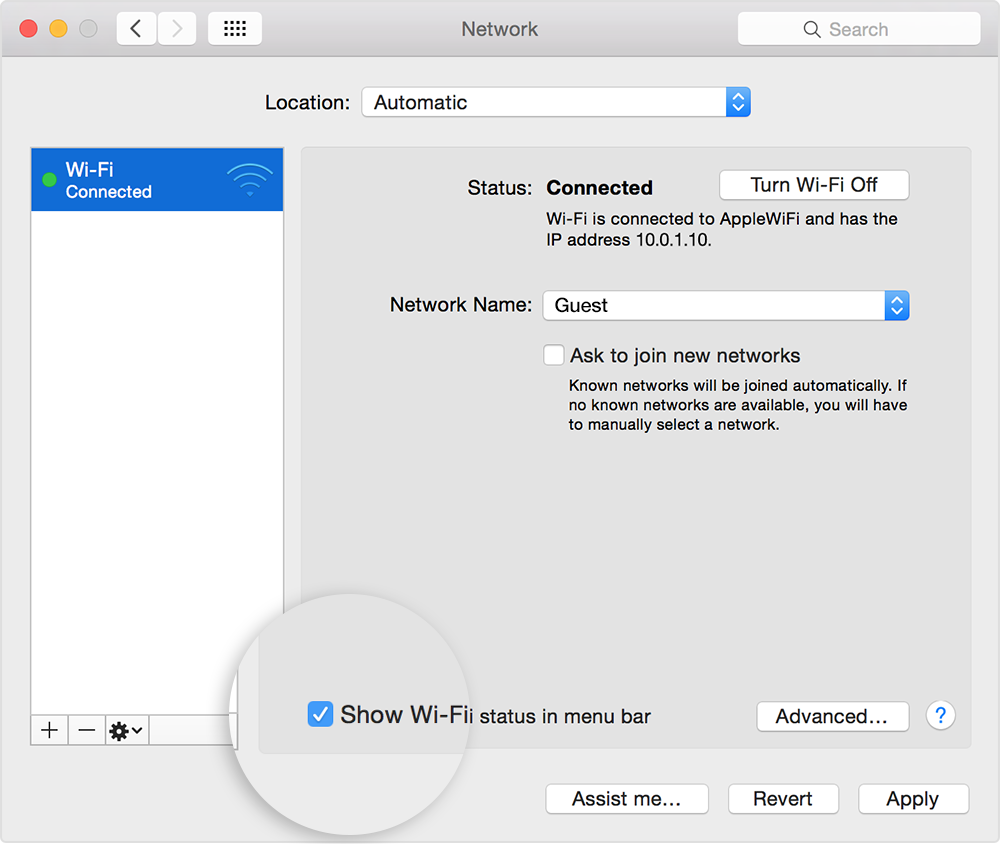
- TURN OFF LOOKING FOR WIFI SIGNAL IN MAC UPGRADE
- TURN OFF LOOKING FOR WIFI SIGNAL IN MAC PASSWORD
- TURN OFF LOOKING FOR WIFI SIGNAL IN MAC PC
- TURN OFF LOOKING FOR WIFI SIGNAL IN MAC MAC
If you are frequently experiencing WiFi connectivity problems, the issue might be related to DNS server of your Internet Service Provider (ISP) being over-crowded or going through problems. Note: The Wireless Diagnostics tool may temporarily change certain network settings on your computer. On the next screen, click on the Continue button and allow Wireless Diagnostic Tool to find problems on your device. Open Spotlight Search (press Command + Space keys) > type Wireless Diagnostics in Spotlight search window and click on Wireless Diagnostics.App. If above methods did not help, you can try the built-in Wireless Diagnostics tool as available on your MacBook and see if it comes up with any suggestions.
TURN OFF LOOKING FOR WIFI SIGNAL IN MAC MAC
Switch ON the WiFi Network on your Mac and see if you are able to connect to Internet. On the pop-up, select Wi-Fi as the Interface, type a Name for the WiFi Network (Optional) and click on Create.Ĭlick on Apply to save the New WiFi Network on your Mac. On the same screen, make sure Automatic Location is selected and click on the (+) Icon. On the next screen, select your WiFi Network in left-pane, click on the (-) Minus icon and click on Apply to remove WiFi Network from your Mac.
TURN OFF LOOKING FOR WIFI SIGNAL IN MAC PASSWORD
Create New WiFi Networkīefore removing your current WiFi Network make sure that you note down your WiFi Network Password as you may be prompted to enter Password when you join New WiFi Network.Ĭlick on WiFi Icon located in top-menu bar (top-right corner) and Switch OFF WiFi Network on your Mac.Ĭlick on Apple Logo in top-menu bar > select System Preferences in the drop-down menu and click on Network. Note: You can remove unwanted WiFi Networks from your MacBook by selecting the Network and clicking on the (-) Minus Icon. On the next screen, drag your Preferred WiFi Network to the top in Preferred Networks window.Ĭlick on OK to save your Preferred WiFi Network Settings. In the right-pane, scroll down a bit and click on the Advanced button. On the next screen, select WiFi in the left-pane. If this is the case, you need to setup Network Priority on your MacBook.Ĭlick on Apple Logo > System Preferences > Network. Setup Network PriorityĪs mentioned above, the problem might be due to presence of multiple saved WiFi Networks on your MacBook. On the next screen, switch to TCP/IP tab and click on Renew DHCP Lease button.Ĭlick on OK to save the revised DHCP Settings on your computer and close Network Settings screen. In the right-pane, scroll down and click on Advanced button. On the next screen, select your WiFi Network in the left-pane. On the next screen, click on the Network icon. Renew DHCP LeaseĬlick on Apple Logo in top-menu bar, select System Preferences in the drop-down menu. Simply, switch OFF the Power Supply to your Modem/Router > wait for 60 seconds and connect back the Modem/Router to its power supply source.Īfter this, you might be pleasantly surprised to see WiFi working without any interruption on your MacBook. Power Cycle Modem/Routerīefore going through other troubleshooting steps, make sure that the problem is not due to your Router/Modem going through temporary technical glitches. Use a DOCSIS 3.This can happen, if you had previously connected your MacBook to other WiFi Networks (Office, Library, Airport or others) and these Networks are saved on your Mac.

TURN OFF LOOKING FOR WIFI SIGNAL IN MAC PC
TURN OFF LOOKING FOR WIFI SIGNAL IN MAC UPGRADE
Check your WiFi router vendor support site for firmware upgrade availability.


 0 kommentar(er)
0 kommentar(er)
